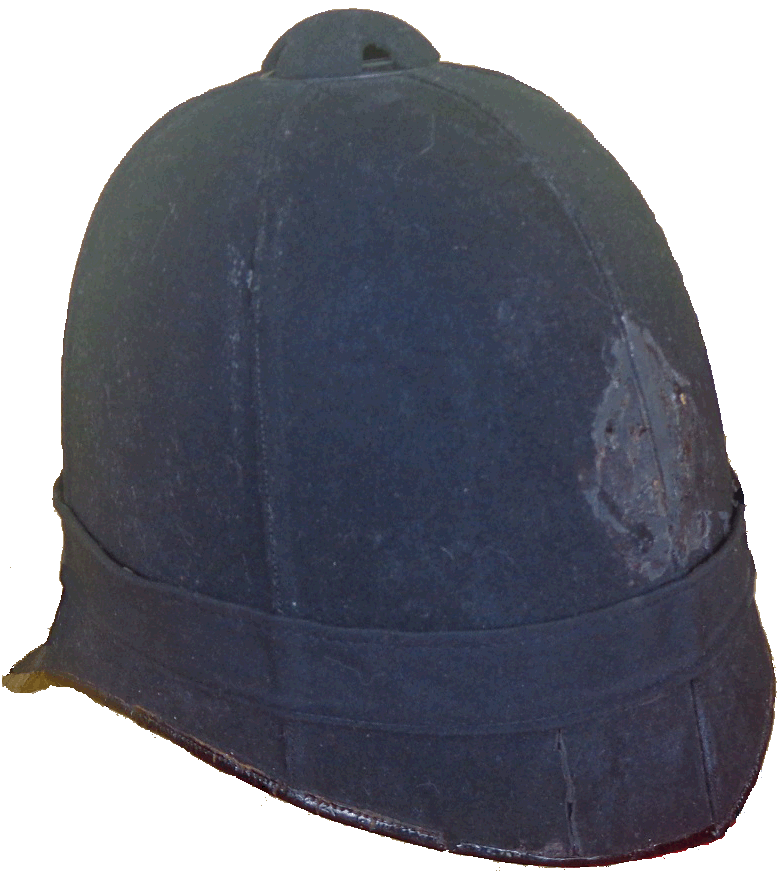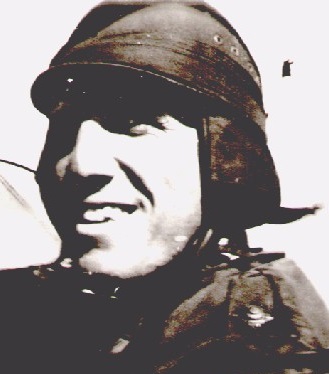 Figure 1. August 1918. The earliest close-up image found of the ‘Cork Aviation Helmet’, taken at the Royal Flying Corps/Royal Air Force, Flying School, Ismailia, Egypt, worn by Second Lieutenant Spaulding. This is the RFC 1917 Pattern, ‘Helmet, Cork Aviation’, externally the main shell is near identical to later versions, with puggaree, four side vents and a typical ‘sun helmet’ ventilation gap between the headband and shell. The outer covering at this time was made-up of four segments of cloth, a front and side seam can just be made out. A large rear brim can be seen shading the neck; however it has a very narrow and thin front peak, at this time these peaks were not part of the cork shell but were attached to the canvas cover. Soon, at least by mid-1919, the design was ‘revised’, adding a complete brim and extending the front peak slightly to help shade the face. After a 1926-27 review the liner and earflap fixings were also modified; it stayed in that configuration up to 1942. The ear-pockets can be seen to be holding large diameter gosport tube earpieces. (Image, see here). Continue reading
Figure 1. August 1918. The earliest close-up image found of the ‘Cork Aviation Helmet’, taken at the Royal Flying Corps/Royal Air Force, Flying School, Ismailia, Egypt, worn by Second Lieutenant Spaulding. This is the RFC 1917 Pattern, ‘Helmet, Cork Aviation’, externally the main shell is near identical to later versions, with puggaree, four side vents and a typical ‘sun helmet’ ventilation gap between the headband and shell. The outer covering at this time was made-up of four segments of cloth, a front and side seam can just be made out. A large rear brim can be seen shading the neck; however it has a very narrow and thin front peak, at this time these peaks were not part of the cork shell but were attached to the canvas cover. Soon, at least by mid-1919, the design was ‘revised’, adding a complete brim and extending the front peak slightly to help shade the face. After a 1926-27 review the liner and earflap fixings were also modified; it stayed in that configuration up to 1942. The ear-pockets can be seen to be holding large diameter gosport tube earpieces. (Image, see here). Continue reading
Category Archives: India
A Helmet of the Garhwal Rifles 39th (Garhwal) Regiment Bengal Army
The regiment was first raised in 1887 as the Aligarh Levy but was disbanded after disgracing itself at the Rawalpindi Review in 1888. In 1890 it was reformed as the 39th (The Garhwal) Regiment of Bengal Light Infantry. The official title of ‘Rifles’ was received in 1892. The ‘Phoenix’ badge was later dropped, and the Maltese Cross which was in use by the Rifle Brigade (Prince Consort’s Own) was adopted. The regiment fought in both World Wars as well as in the inter-war period and post independence. Continue reading
The Flying Sun Helmets
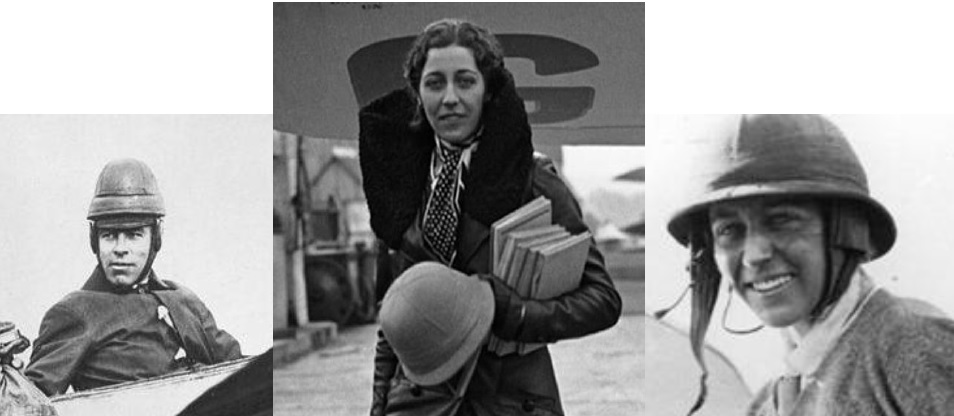 Discussed here are two types of ‘Flying Sun Helmet’; first, a type of cork crash helmet, which used Colonial Helmet construction methods, but whose primary function was protection from impacts rather than the sun, and secondly a true hybrid sun helmet, whose inception was to protect against the sun whilst flying in exposed cockpits in areas where such hats were traditionally used.
Discussed here are two types of ‘Flying Sun Helmet’; first, a type of cork crash helmet, which used Colonial Helmet construction methods, but whose primary function was protection from impacts rather than the sun, and secondly a true hybrid sun helmet, whose inception was to protect against the sun whilst flying in exposed cockpits in areas where such hats were traditionally used.
Although the early 1920s to early 1940s ‘Cork Helmet-Aviation’ (a.k.a., ‘RAF Type-A Flying helmet’ or ‘East of Malta Helmet’) is the best known aviator’s sun helmet, with various examples having been covered on this site by Peter Suciu and Roland Gruschka (Refs. 1 & 2), some earlier flying helmets also owe their origins or construction methods to military sun helmets. Continue reading
Indian Medical Services Named Wolseley
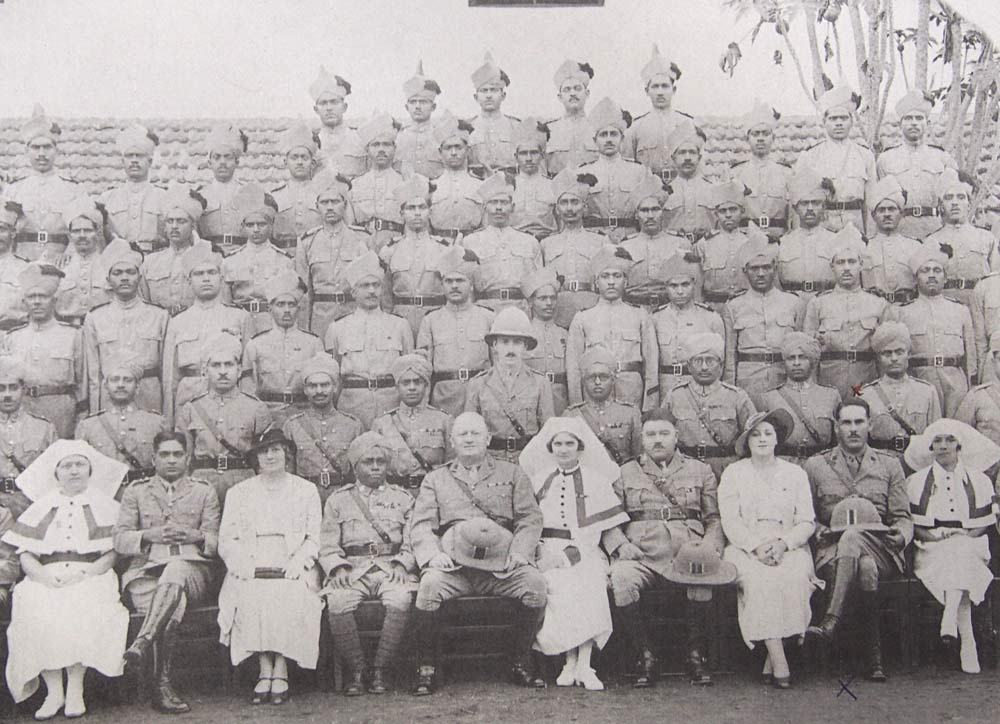 While not a “fighting unit” in the traditional sense, the Indian Medical Service (IMS) was a military medical service in British India. Many of its officers, who were both British and Indian, served in civilian hospitals and the unit saw service in both World Wars – with many of its doctors heading to the front lines with the Indian Army. Continue reading
While not a “fighting unit” in the traditional sense, the Indian Medical Service (IMS) was a military medical service in British India. Many of its officers, who were both British and Indian, served in civilian hospitals and the unit saw service in both World Wars – with many of its doctors heading to the front lines with the Indian Army. Continue reading
A Rare Attributed Wolseley
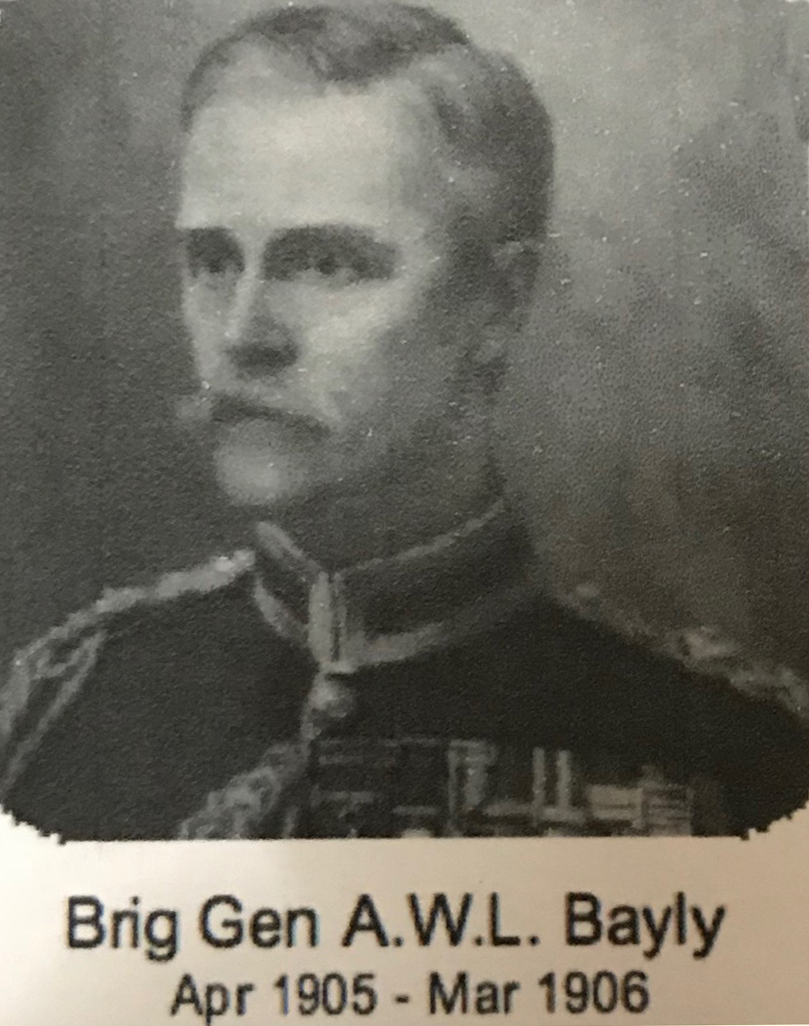 Alfred William Lambart Bayly was born 18th February 1856 in Paisley, Scotland. Educated at Wellington College, Berkshire, England and gazetted as Lieutenant to the 108th Foot 13th June, 1874. He moved to the Bombay Staff Corps 1879 and passed through Staff College in 1893.
Alfred William Lambart Bayly was born 18th February 1856 in Paisley, Scotland. Educated at Wellington College, Berkshire, England and gazetted as Lieutenant to the 108th Foot 13th June, 1874. He moved to the Bombay Staff Corps 1879 and passed through Staff College in 1893.
The photo above shows Gen Bayly after his appointment to Commandant of the Indian Staff College at Quetta.
He served in the Afghan War of 1880-1881 and was awarded the Afghanistan medal with Kandahar clasp. He also served in the Sudan, 1885 and Burma, 1886-7 earning medals with clasps and The Companion of the Distinguished Service Order. He was made commander of the 126th Bombay Infantry (Baluchistan) Regiment in 1896 and fought in the 2nd Boer War once again being decorated , mentioned in despatches and was made a Companion of the Bath.
The Proto-Sun Hats of the Far East
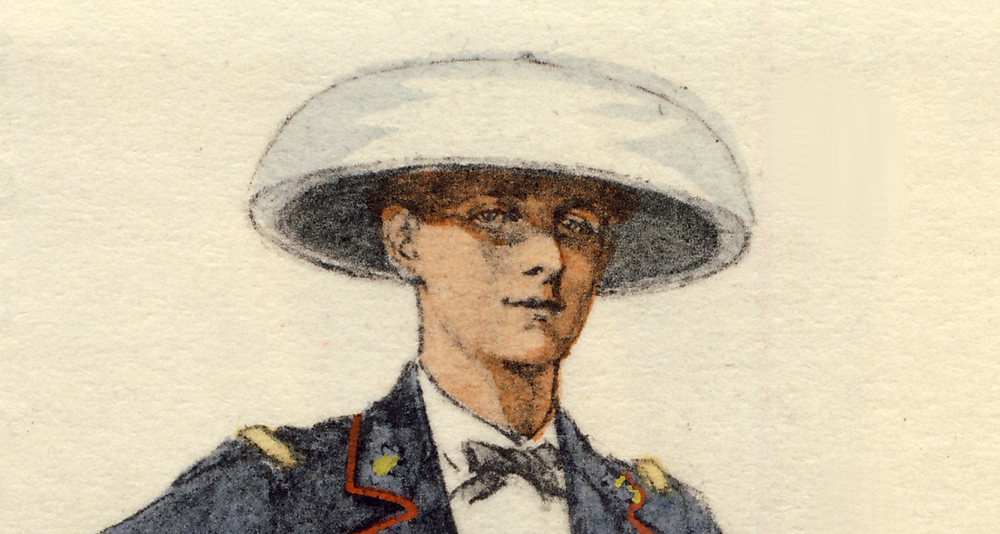
It is a hat or form of headgear known by many names. It is known as a “salakot” in the Philippines, the “salacco” in Southeast Asia, and at times even described as the “Planters Hat” in British India. It is a type of a Asian “conical hat,” which we have written about in detail in the past, but its history in use by the colonial masters of Asia has largely been overshadowed by the sun/pith helmet. Continue reading
Is the “Pith Helmet” a Sign of Colonialism as the Media Believes it to be?
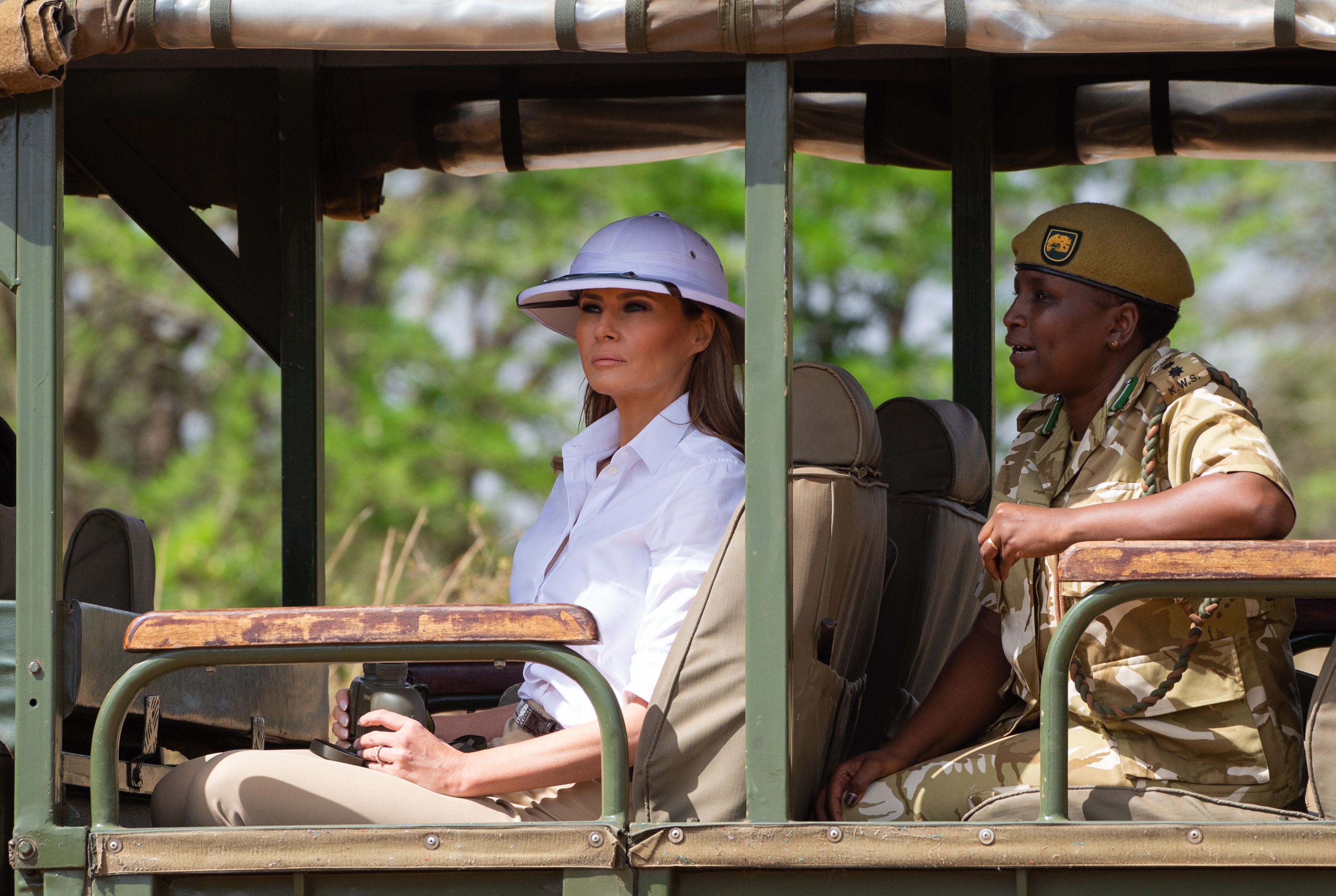
While we typically write about the history, use and even the evolution of military sun helmets and other tropical headdress, I felt it necessary to address another aspect of sun/pith helmets. Recently, First Lady of the United States Melania Trump was called out for simply choosing to wear a pith helmet as a part of a “safari” inspired outfit.

